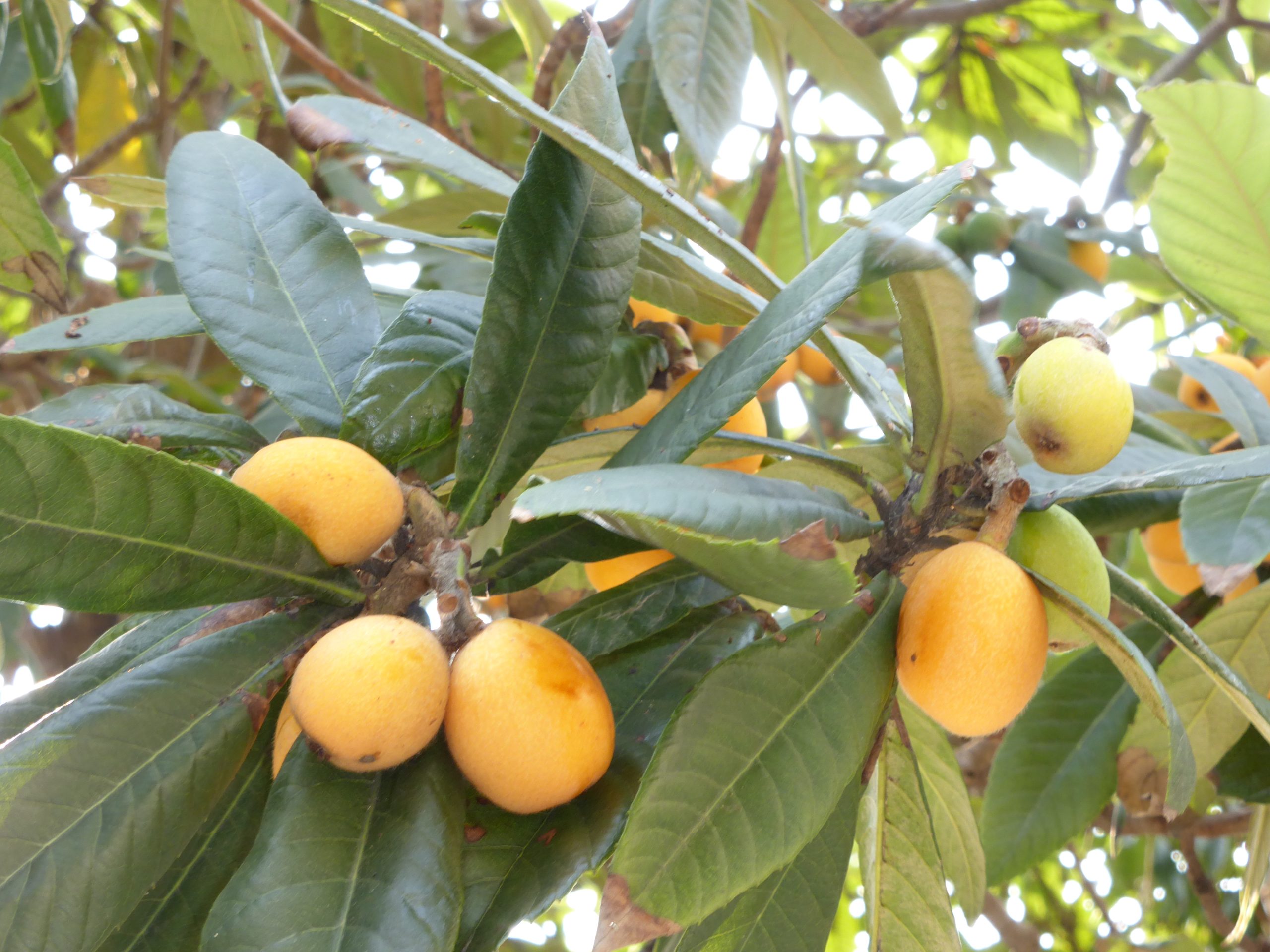
The loquat tree, with its tropical look and sweet, tangy fruits, is a common sight in many gardens and yards. This easy-to-grow tree not only adds a touch of greenery but also provides delicious fruits that you can enjoy right off the branch.
Identifying the Loquat Tree
The loquat tree, scientifically known as Eriobotrya japonica, is recognizable by its large, glossy leaves that are dark green on top and a fuzzy, lighter green underneath. These trees don’t grow very tall, usually reaching between 10 to 30 feet, making them a perfect fit for smaller garden spaces or as a focal point in larger yards.
In late winter or early spring, loquat trees bloom with sweet-smelling white flowers, making them a lovely addition to any garden interested in attracting bees and butterflies. The flowers soon turn into clusters of small, round or pear-shaped fruits that have a smooth, yellow skin and a juicy, slightly acidic flavor.
Uses of Loquats
Loquats are more than just ornamental. The fruits are packed with vitamins A and C, making them a healthy snack straight off the tree. They’re great in fruit salads, jellies, and jams, or even baked into pies and pastries. The tangy sweetness of loquat makes it a unique ingredient for sauces and chutneys that can accompany meats or be enjoyed as a spread.
The leaves of the loquat tree have their uses too. In traditional Chinese medicine, they are used to make a tea that is believed to help with respiratory problems like coughs and soothe sore throats.
Cultural Significance
Originally from Southeast China, loquat trees have been grown for thousands of years in Japan and Korea before spreading to other parts of the world. In these cultures, the loquat is more than just a fruit tree. It’s often planted for its good luck and protective charm. Loquat trees are also popular in urban landscaping due to their robust nature and the dense shade they provide.
Planting and Caring for Your Loquat Tree
Loquat trees are surprisingly low-maintenance. They can tolerate a range of soils, though they prefer well-draining, slightly acidic soil. Once established, they are quite drought-resistant but will produce better fruit with regular watering. Loquat trees do well in full sun but can also handle a bit of shade.
One thing to note is that while loquat trees are generally robust, they can be susceptible to fire blight, a bacterial disease that can damage branches and fruit. Keeping the tree pruned and watching for the first signs of disease can help keep it healthy and productive.

Leave a Reply